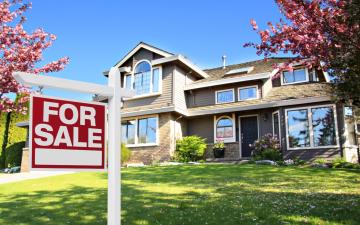5 Ways to Improve Your Home’s Energy Efficiency (and Save Money)
August 18, 2017
As the cost-of-living continues to rise in Canada, thanks largely to increased inflation rates, energy prices have become a main contributor to higher household bills (particularly in Ontario).
Fortunately, there are several ways you can improve your home’s energy efficiency and reduce your costs.
Adjust your thermostat
Running the furnace all day and night uses a large amount of energy and accounts for the majority of a home’s energy costs. Small adjustments can make a big difference in the way your furnace performs and the amount of energy being consumed. Turning down your thermostat at night or when there’s no one at home, using ceiling fans in the summer instead of the air conditioner, and regularly replacing your furnace’s air filters all help to increase your home’s energy efficiency and reduce your monthly costs.
Insulate your home
If your floors and walls feel cold in the winter, or the inside air is hot and muggy in the summer, then your home’s insulation is likely ineffective or non-existent. Lack of insulation quickly leads to air transfer to and from the outside, which makes your furnace work harder to regulate the temperature and drives up your energy bills.
Insulating basements and attics, especially if they are unfinished spaces, should be the priority because air can easily escape through concrete and other surfaces. Next, check around your windows and doors and add or replace the insulation if necessary. Homes shouldn’t be totally airtight or the air quality can be affected, but minimizing air transfer to and from the outside will greatly improve energy efficiency and heating/cooling costs.1
Unplug appliances and devices
People often don’t realize that plugged-in appliances and devices continually use electricity even when they’re not turned on. This type of “phantom” or “vampire” electricity use can account for between 5% and 8% of a home’s energy loss.2 Everything from TVs, phone chargers, computers, printers, cable boxes, etc., will continue to draw power if left plugged in. The simplest way to unplug your appliances and devices is to use a power bar. If you’re leaving the house for the day, simply unplug the bar and you’ll unplug several items at once.
Replace old light bulbs
According to the International Association of Certified Home Inspectors (InterNACHI), “traditional incandescent lights convert only 10% of the energy they consume to light, while the rest becomes heat.”3 On the other hand, new lighting options, such as LED light bulbs, can reduce energy by as much as 75%. Newer light bulbs also last longer, saving you money on both energy costs and buying replacements.
Upgrade your windows and doors
It may come as no surprise that windows and doors can be a major source of energy loss in a home, but did you know that “drafts caused by gaps and cracks around doors, windows and skylights can add up to 25% to your heating and cooling bills.”4 Warped or damaged frames, single pane windows, cracked glass and wonky alignment can all contribute to air transfer to and from the outside.
If your home’s windows and doors need an upgrade, consider investing in European-style Tilt & Turn products, which are all CSA and Energy Star rated due to top quality engineering and materials.
Tilt & Turn windows are made with glass that is 30% thicker than standard windows, while Tilt & Turn doors contain a coating of laminate, greatly reducing air transfer to and from the outdoors. Multiple air chambers and steel reinforcement in the frames provide additional insulation and, when in the closed position, the unique multipoint locking system ensures that the windows and doors are flush with frame, helping to eliminating drafts.
To learn more about Tilt & Turn products and how they can help improve the energy efficiency in your home, contact Catana Windows and Doors today!
1 http://globalnews.ca/news/1776037/what-you-need-to-know-about-home-insulation/
3 https://www.nachi.org/increasing-home-energy-efficiency-client.htm
4 http://yourenergysavings.gov.au/energy/heating-cooling/windows-doors-skylights





